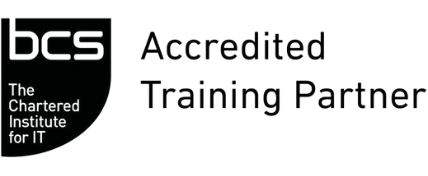Course Overview O v e r v i e w
- Course Overview
- Course Outline
- What’s Included
- What You’ll Learn
- Exam Details
BCS Practitioner Certificate in Enterprise and Solution Architecture Overview
The BCS Practitioner Certificate in Enterprise and Solution Architecture builds on foundational architecture knowledge, focusing on applying frameworks and techniques to real-world business scenarios. It explores how enterprise and solution architectures are structured, modelled, governed, and implemented to align business strategy with technology solutions.
Formal training helps professionals translate business needs into well-defined architecture solutions. It strengthens analytical, strategic, and communication skills, equipping learners to contribute effectively to architecture design and transformation initiatives.
At Training Deals, we provide practical, expert-led architecture training designed to bridge theory and application. Our flexible learning formats, competitive pricing, and dedicated learner support ensure professionals gain both certification and confidence in applying advanced architectural concepts.

BCS Practitioner Certificate in Enterprise and Solution Architecture Outline
Module 1: Architecture Domains and Frameworks
Role of Architecture in an Organisation
Different Architecture Domains and the Relationships Between Them
Key Architecture Frameworks
How Industry Standards are Relevant to Architecture?
Module 2: Architecture and the Organisation
Role of Architecture to Other Business Areas
Discuss Use of the Business Change Lifecycle as an Input for Architecture
Business Needs and the Intended Solution
Module 3: Professionalism in Architecture
Compliance with Professional Standards
Types of Stakeholders
Explain Specific Stakeholder Needs
How to Influence Others?
Apply a Practical Customer Focus
Roles and Dynamics of a Successful Team
Social, Ethical and Economic Concerns to the Role of an Architect
Module 4: Corporate Governance
Corporate Governance and the Impact it has on the Role of an Architect
Key Architecture Governance Concepts, Roles, and Artefacts
Importance of Risk Management to the Role of an Architect
Module 5: Architectural Process, Tools, and Vision
Practical Application of the Solution Architecture Framework
Three Varieties of the Software Development Lifecycle (SDLC)
Design of a Target Solution Architecture
Use of Common Architecture Models
Use of Common Information Systems Modelling Techniques
Different Types of Business Requirements
Method of Preparing a Gap Analysis
Business Case for Presentation
Module 6: Quality Assurance
Use of a Range of Quality Assurance Tools or Techniques
Principle of Separation of Concerns (Soc)
Explain Change Management Tools and Processes
Opportunities for Continuous Improvement

What’s included in this BCS Practitioner Certificate in Enterprise and Solution Architecture?
- Expert-led Training Sessions by Certified Instructors
- BCS Practitioner Certificate in Enterprise and Solution Architecture Exam
- Digital Delegate Pack
What You’ll Learn in this Course
This course takes you from understanding architecture principles to applying advanced frameworks, models, and governance practices in real-world enterprise and solution design. Each stage builds strategic and practical capabilities to support organisational transformation.
Learn to apply architectural frameworks and reference models in practical contexts
Learn to structure and model enterprise and solution architectures effectively
Learn to align business strategies with architecture decisions and designs
Learn to assess, evaluate, and communicate architectural solutions to stakeholders
Learn governance and assurance practices to support sustainable architecture delivery
Learn to bridge business and technology perspectives through structured design approaches

BCS Practitioner Certificate in Enterprise and Solution Architecture Exam Information
The BCS Practitioner Certificate in Enterprise and Solution Architecture Exam assesses candidates’ ability to apply architectural frameworks and practices in real-world scenarios. The format of the exam is as follows:
Question Type: Scenario-based
Pass Marks: 65%
Duration: 50 Minutes
Type: Closed book

Our Upcoming Batches
Thu 8 Jan 2026 - Fri 9 Jan 2026
Duration: 2 Days
Thu 16 Apr 2026 - Fri 17 Apr 2026
Duration: 2 Days
Thu 6 Aug 2026 - Fri 7 Aug 2026
Duration: 2 Days
Thu 10 Dec 2026 - Fri 11 Dec 2026
Duration: 2 Days
Thu 1 Jan 2026 - Fri 2 Jan 2026
Duration: 2 Days Buxton
Mon 5 Jan 2026 - Tue 6 Jan 2026
Duration: 2 Days Buxton
Thu 16 Apr 2026 - Fri 17 Apr 2026
Duration: 2 Days Buxton
Thu 14 May 2026 - Fri 15 May 2026
Duration: 2 Days Buxton
Request More Information

Corporate Training
Elevate your workforce with expert-led corporate training that enhances skills, boosts productivity, and aligns teams with your business goals.

Individuals Training
Unlock personal growth and sharpen professional skills with tailored training designed to build your confidence and career success.
Your Path to Professional Recognition
Our path is designed to guide you through each stage with clarity, support and practical learning, helping you achieve your goals with confidence.

Step Forward with Globally Recognised Certification
A recognised certification is more than a credential. It’s proof of your commitment to professional excellence, providing you with the credibility, confidence, and global reach to advance your career in exciting new directions.
Globally Certified Professionals Over Time
Career Growth
81%Certified professionals reported receiving a promotion after earning their certification.
Global Opportunities
89%Certified professionals experienced access to new career opportunities, including leadership roles and global positions.
Not able to find what you are looking for
Our experts will guide you to the right course from thousands worldwide: tailored to your goals.
Frequently Asked Questions
It is a practitioner-level qualification that focuses on applying frameworks, modelling, and governance techniques to design effective enterprise and solution architectures.
It validates advanced architectural knowledge, enabling professionals to support strategic alignment, transformation initiatives, and complex design solutions.
It is ideal for Enterprise Architects, Solution Architects, Business Analysts, Technical Leads, and professionals involved in architecture design and governance.
Yes, enterprise and solution architecture practices are used in IT, finance, healthcare, government, manufacturing, and more.
It equips learners with practitioner-level architecture skills, opening pathways to senior roles in enterprise architecture and strategic IT planning.
What Our Customers Say About Us
 Matthew Sullivan
HR Business Partner
Matthew Sullivan
HR Business Partner
Our HR team registered for the Change Management Foundation & Practitioner Training Course, and it couldn’t have been more valuable. The team gained practical frameworks to guide employees smoothly through transitions with confidence.
 Olivia Barrett
Operations Manager
Olivia Barrett
Operations Manager
Our operations staff completed the Lean Six Sigma Green Belt Training Course, and it has been transformative. We can now identify inefficiencies quickly, and the tools we learned are already improving performance across the team.
 Benjamin Foster
Product Manager
Benjamin Foster
Product Manager
Our product team took part in the Agile Project Management Foundation & Practitioner (AgilePM®) Training Course, and the difference is remarkable. We’re now more adaptive, collaborative, and efficient in managing change.
 Lucy Harper
IT Support Lead
Lucy Harper
IT Support Lead
Our IT support unit attended the ITIL® 4 Foundation Training Course, and the results have been impressive. Processes are smoother, collaboration has improved, and the team finally speaks a common language of service management.
 Edward Clarke
Programme Manager
Edward Clarke
Programme Manager
We joined the PMP® Certification Training Course as a leadership group, and it was outstanding. The trainer made every concept practical, and the exam preparation resources helped the whole team feel ready to tackle complex projects.
 Amelia Rhodes
Project Officer
Amelia Rhodes
Project Officer
Our project office completed the PRINCE2® Foundation & Practitioner Training Course, and it has brought real clarity to how we manage projects. The trainer’s examples were excellent, and the team now follows a structured approach with confidence.

























